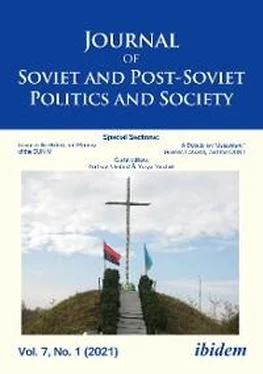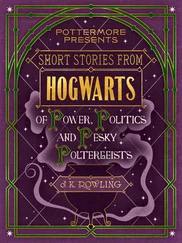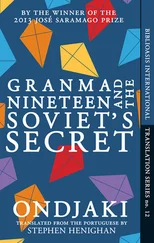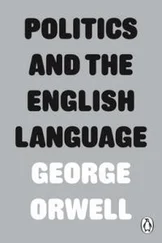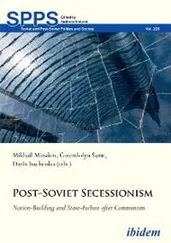During combat activities, units of NKVD troops were accompanied by at least one or two officers representing operational security bodies. They contacted the spy network, made decisions regarding operational deployment of specific soldiers, and carried out interrogations of captured guerrilla fighters and members of the underground movement on the spot immediately after the clashes. Although no monograph discussing the NKVD’s investigative methods has been published, one thing is certain: these methods were surprisingly effective. Available materials indicate that Soviet officers were capable of pressurizing a major portion of arrested individuals into speaking. Heroic attitudes were rare. What is the most surprising is the speed at which members of the underground movement cracked under interrogation—and it was frequently the speed that determined whether the information obtained was useful (there were cases when the detainees disclosed the hiding place of their closest family members within one or two hours). Perhaps the answer to this puzzle can be deduced from a medical report compiled regarding the last commander of the Lithuanian underground movement, Adolf Ramanauskas, who was captured on 12 October 1956. Three days later, he was taken to hospital unconscious and the doctors described his condition in the following way:
The right eye is covered by a hematoma, six wounds on the eyelid have been found … they were most likely inflicted on him using a thin wire or a nail which was inserted deep into his eyeball. Numerous hematomas on the abdomen, the middle finger of his left palm has been cut off … a major bloody scar was revealed on the right-hand side of his scrotum … both testes and both deferent ducts have been removed. 21
There is no reason to think that the NKVD operating in Ukraine was more lenient than its equivalent operating in Lithuania.
In addition, the NKVD troops used all sorts of tricks. One of such tricks involved provoking the UPA to attack in locations where ambushes had been set up. On routes which were particularly frequently attacked by the UPA, situations were staged involving for example a car breakdown. A portion of soldiers remained hiding in a truck filled with weapons ready to fire, whereas several others were busy mending the vehicle. Sometimes a poorly protected car “broke down” in a location where another group of Soviets had already secretly assumed their positions. In addition, ambushes were set up for example in the vicinity of village grocery stores immediately following the delivery of goods, and near trucks with supplies whose drivers were “thoughtless” enough to leave them in the village overnight. The Soviets also set up ambushes near the bodies of killed guerrilla fighters and near the agent who stayed in the village overnight. For example, on 4 December 1945 an NKVD operational group killed three UPA members in the village of Ustya in Ternopil oblast’. Their bodies were left where they were killed, however, an ambush was secretly set up in the vicinity of this location. On the same night, another three guerrilla fighters were killed in this ambush. 22
One important method of fighting the guerrilla movement involved forced displacement of the civilian population. In line with recommendations issued by Beria, the deported individuals included not only those who were suspected of contacting the underground movement but also entire families of identified members of the underground. These measures effectively intimidated the local residents and discouraged them from supporting the activity of the underground movement. Although they were unable—for example, for technical reasons—to displace entire nations, the communists focused their repressive measures on families of individuals linked to the guerrilla fighter movement and the underground movement. The lists of names of individuals to be deported were compiled by an NKVD/NKGB officer.
The first transport of displaced persons departed on 7 May 1944. It carried around two thousand individuals. In the initial period, fifteen to twenty individuals were placed in one car. This triggered protest from Deputy People’s Commissar of Internal Affairs of the USSR Chernyshev, which resulted in thirty to thirty-five individuals being placed in one car “in conformity with the standards.” In this way, the already difficult travel conditions got even worse as winter came. In some transports no stoves were available. Due to freezing weather, in transport no. 49339, which departed from Ternopil’, twelve children died and many other individuals fell ill. The displaced persons were transported for example to the Komi Republic and to Irkutsk oblast’, where they were used as labor during tree felling and in mining. In 1944–45, a total of more than thirty thousand individuals were displaced and transported deep into the USSR. 23
Numerous party members frequently criticized the NKVD Internal Troops for their ineffectiveness. NKVD commanders refuted these accusations, arguing that many of their failures resulted from the lack of reliable information received from the NKGB and within the NKVD itself. During a meeting in Rivne oblast’, defending himself against these claims, General Bragin astutely reminded the employees of the party obkom that without the involvement of the Internal Troops the party would not have been able to operate in the field and that his soldiers fight “and at the same time they endure many hardships, eat too little, have too little sleep and risk their necks.” 24Bragin argued that the NKVD troops showed… excessive “humanism.” 25He said:
Sometimes we are afraid to burn down a house, whereas it is absolutely necessary to burn it down without any hesitation. I don’t mean to say that our goal should be to burn houses down—the Soviet man never resolves any problems in such a manner, however, whenever this is necessary, when the right moment comes, then this is what we should do. 26
He went on to say that should such facts emerge, “I’m not talking about [instances of] large-scale arson / then please take into account that the right moment had come and that it was necessary to do this.” 27
The example of the above-mentioned statement by General Bragin shows that during the clashes the Internal Troops units were merciless towards their enemy: killing the wounded fighters was a common practice, and the soldiers did not bother about accidental victims. Another common practice was to break the guerrilla fighters’ resistance by setting fire to farms in which they were given shelter. This happened even in the situation when their presence was reported by the farm owner himself. The Soviets were entering areas in which, according to their propaganda, they could expect a warm welcome. Meanwhile, in reality, they met with distrust on the part of the local population, and they were constantly at risk of being attacked by guerrilla fighters. Frequently, the response of the NKVD Internal Troops was to treat all inhabitants of areas where the UPA was active as “criminals.” As a consequence, during their dragnet operations they often killed innocent people and later, in their reports, presented these victims as killed guerrilla fighters. For example, on 21 October 1944 fifteen NKVD soldiers came to the village of Kryvenke in Probizhna raion in Ternopil oblast’ to displace “families of criminals.” They were attacked by guerrilla fighters, lost three soldiers, and withdrew. On the next day, a unit commanded by major Polyaski and lieutenant Moldovanov arrived and carried out “a wild pogrom of the village.” 28Ten villagers: men aged between sixty and eighty, were shot dead (apparently the younger ones managed to escape), and forty-five farms were burnt. Five of the individuals who were killed were family members of Red Army servicemen.
Soviet documents contain descriptions of many such cases of lawlessness and abuse. It is likely that many more were never discovered by inspection bodies, and that this is why no accounts of these events can be found in the archival materials. In its resolution of 10 January 1945 even the Central Committee of the Ukrainian branch of the party admitted that “unacceptable incidents” had happened when the NKVD and the NKGB burnt down houses and killed individuals who had no links with the guerrilla movement, as a result of which they “discredited both themselves and the Soviet authorities.” 29
Читать дальше
